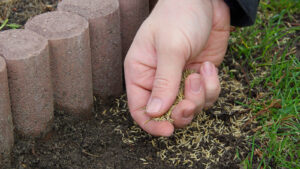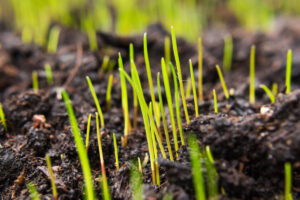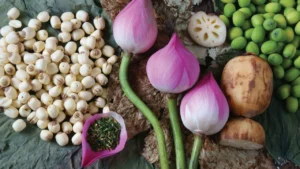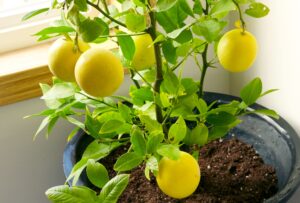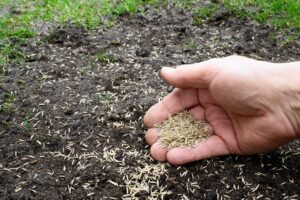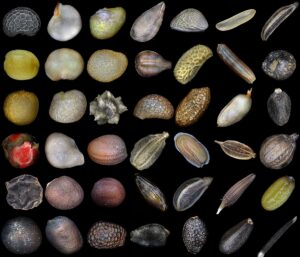How to Pot a Germinated Date Seed: A Complete Guide
Have you ever enjoyed a delicious date and wondered if you could grow that seed into your very own date palm? While date palms (Phoenix dactylifera) typically thrive in desert regions, you can successfully grow them as ornamental houseplants with the right care. This guide will walk you through the process of potting a germinated date seed and nurturing it into a beautiful indoor palm tree.
Understanding Date Seeds and Germination
Date palms are ancient fruit-bearing trees that have been cultivated for thousands of years. Native to arid regions of the Middle East and North Africa, these remarkable trees can live for over 100 years and reach heights of up to 75 feet in their natural habitat. When grown indoors from seed, they make striking tropical houseplants with their elegant, feathery fronds.
Before diving into potting instructions, it’s important to understand what happens during germination. According to research from the USDA Agricultural Research Service, date seeds have three key germination stages:
- Absorption phase: The seed absorbs water and begins to swell
- Activation phase: Enzymes activate and begin breaking down stored food
- Growth phase: The embryo grows, eventually breaking through the seed coat
Germination Time and Success Rates
Date seeds can take anywhere from 2 weeks to 6 months to germinate, depending on the variety and conditions. Here’s what you can expect:
| Date Variety | Average Germination Time | Success Rate | Optimal Temperature |
|---|---|---|---|
| Medjool | 2-3 months | 60-70% | 85-90°F (29-32°C) |
| Deglet Noor | 1-2 months | 65-75% | 85-90°F (29-32°C) |
| Zahidi | 3-4 months | 55-65% | 85-90°F (29-32°C) |
| Barhi | 2-3 months | 50-60% | 85-90°F (29-32°C) |
| Halawi | 2-4 months | 55-65% | 85-90°F (29-32°C) |
Supplies Needed for Potting Your Germinated Date Seed

Before you begin the potting process, gather these essential supplies:
- 4-6″ pot with drainage holes
- Lightweight, well-draining potting mix (cactus or palm soil works well)
- Perlite or coarse sand for additional drainage
- Small trowel
- Spray bottle with water
- Clear plastic bag or plastic wrap (optional)
- Plant markers or labels
- Watering can with narrow spout
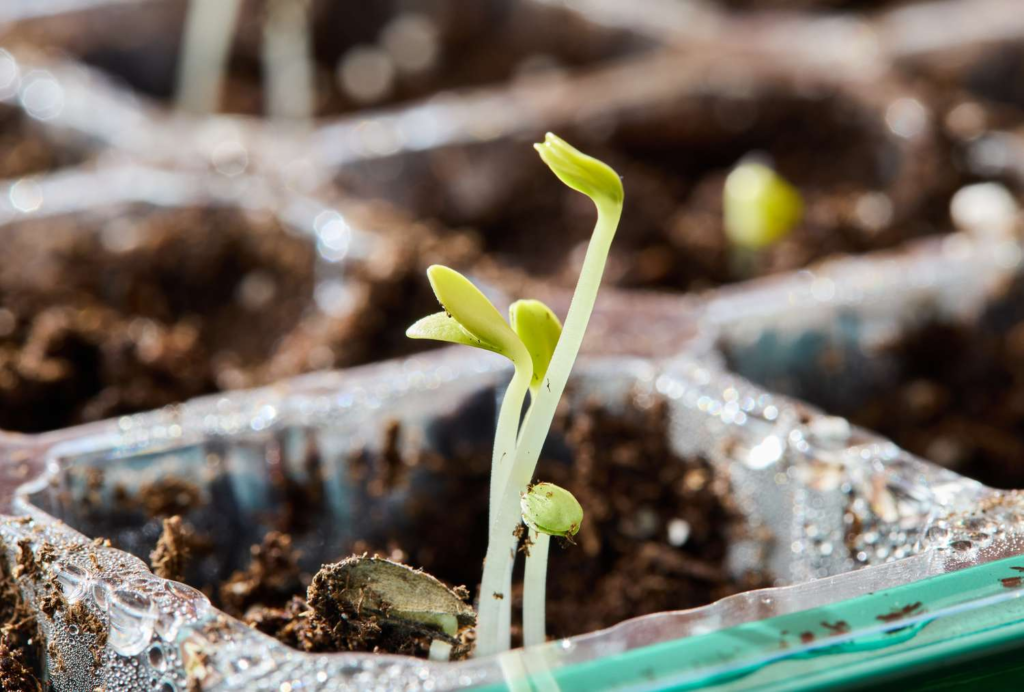
Step-by-Step Guide to Potting Your Germinated Date Seed
Now that you understand the basics and have your supplies ready, let’s walk through the potting process.
1. Preparing the Potting Mix
Creating the right growing environment is crucial for your germinated date seed’s success. Date palms naturally grow in sandy, well-draining soil with minimal organic matter.
- Mix 2 parts quality potting soil with 1 part perlite or coarse sand
- Add a small amount of compost (no more than 10% of total mix)
- Mix thoroughly until well combined
- Pre-moisten the mix by spraying with water until it feels like a wrung-out sponge
Pro tip: Avoid using garden soil, which can compact and harbor diseases.
2. Choosing and Preparing the Pot
The right container makes a significant difference in your date palm’s development:
- Select a pot that’s 4-6 inches in diameter with good drainage holes
- If using a terracotta pot, soak it in water for 30 minutes before using (this prevents the pot from wicking moisture from the soil)
- Place a coffee filter or small piece of mesh over the drainage hole to prevent soil from escaping
- Fill the pot about 2/3 with your prepared potting mix
3. Planting the Germinated Seed
Handle your germinated date seed with care, as the emerging root (radicle) is delicate:
- Make a small depression in the center of the soil, about 1 inch deep
- Carefully place the germinated seed with the emerging root pointing downward
- If a small shoot is visible, position it facing up
- Gently cover with soil, leaving the very tip of the shoot exposed if present
- Press the soil down lightly to remove air pockets
4. Post-Planting Care
The first few weeks after potting are critical for establishing your date palm seedling:
- Water thoroughly until water drains from the bottom of the pot
- Place in bright, indirect light (avoid direct sunlight initially)
- Maintain soil moisture but avoid soggy conditions
- Keep ambient temperature between 75-85°F (24-29°C)
- Optional: Create a mini greenhouse by covering with clear plastic to increase humidity, removing for a few hours daily
Caring for Your Date Palm Seedling
Once successfully potted, your date palm seedling requires specific care to thrive.
Light Requirements
Date palms are sun-loving plants, but seedlings need to be gradually acclimated:
- Weeks 1-2: Bright, indirect light
- Weeks 3-4: Morning sun with afternoon shade
- After month 1: At least 6 hours of direct sunlight daily when possible
When growing indoors, place near a south or west-facing window. Insufficient light causes leggy, weak growth.
Watering Schedule
Proper watering is essential for date palm seedlings, balancing their desert origins with their need for consistent moisture while establishing:
- First month: Keep soil consistently moist but never soggy
- Months 2-6: Allow top inch of soil to dry before watering
- After 6 months: Follow a “deep but infrequent” watering approach
Water quality matters: Date palms are somewhat salt-sensitive. If possible, use rainwater or distilled water, especially if your tap water is high in minerals.
Temperature and Humidity
Recreating desert-like conditions helps your date palm thrive:
- Ideal temperature: 70-85°F (21-29°C) during the day, no lower than 60°F (15°C) at night
- Ideal humidity: 40-60% (lower than most tropical houseplants)
- Avoid cold drafts and sudden temperature changes
Fertilization
Date palms are not heavy feeders, especially as seedlings:
- First 3 months: No fertilizer needed
- Months 3-12: Apply diluted palm fertilizer (1/4 strength) every 6-8 weeks
- Year 2 and beyond: Regular-strength palm fertilizer 3-4 times per year
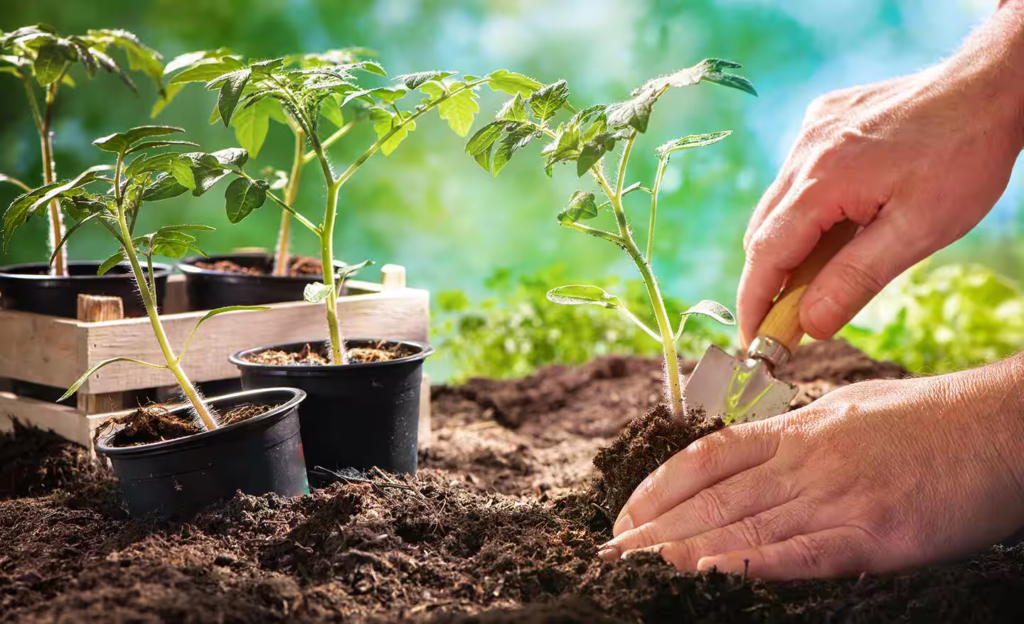
Common Problems and Solutions
Even with proper care, you might encounter some challenges with your date palm seedling:
Yellowing Leaves
Possible causes and solutions:
- Overwatering: Allow soil to dry more between waterings
- Nutrient deficiency: Apply diluted palm fertilizer
- Too little light: Move to a brighter location
No Growth for Extended Periods
Date palms are naturally slow growers, but extended dormancy may indicate:
- Temperature too low: Move to a warmer location
- Insufficient light: Increase light exposure
- Root issues: Check for root rot or pot-bound conditions
Pest Problems
Indoor date palms may attract:
- Spider mites: Increase humidity and treat with insecticidal soap
- Scale insects: Remove manually and treat with neem oil
- Mealybugs: Dab with alcohol-soaked cotton swab and treat with insecticidal soap
Repotting Your Date Palm
As your date palm grows, you’ll need to repot it:
- First repotting: When seedling has 3-4 leaves (typically 6-12 months after potting)
- Subsequent repotting: Every 2-3 years or when roots begin circling the pot
When repotting:
- Select a pot 2″ larger in diameter than the current one
- Use fresh palm or cactus potting mix
- Avoid disturbing the root ball significantly
- Water thoroughly after repotting
- Keep in shade for 1-2 weeks to recover
Long-Term Growth Expectations
Growing date palms from seed requires patience, as they develop slowly compared to many houseplants:
- Year 1: Expect 3-5 slender, simple leaves
- Years 2-3: Development of more complex, feathery fronds
- Years 3-5: Trunk beginning to form
- Years 5+: Mature-looking, though smaller, palm appearance
Indoor date palms rarely fruit, but they make beautiful ornamental plants that can live for decades with proper care.
Conclusion
Potting and growing a date seed is a rewarding project that connects you to one of humanity’s oldest cultivated plants. While date palms require specific conditions and patience, the elegant tropical appearance they bring to your home makes the effort worthwhile. Remember that each variety has different characteristics, and growing from seed always introduces genetic variation, making your palm truly unique.
By following the guidelines in this article, you’ll be well on your way to growing a healthy date palm from a simple seed. The process teaches valuable lessons about plant development and provides the satisfaction of nurturing a plant that could potentially outlive you—a living legacy from a simple fruit pit.
For more detailed information about date palm varieties and commercial cultivation in the United States, visit the USDA’s Agricultural Research Service Date Palm Research website.

